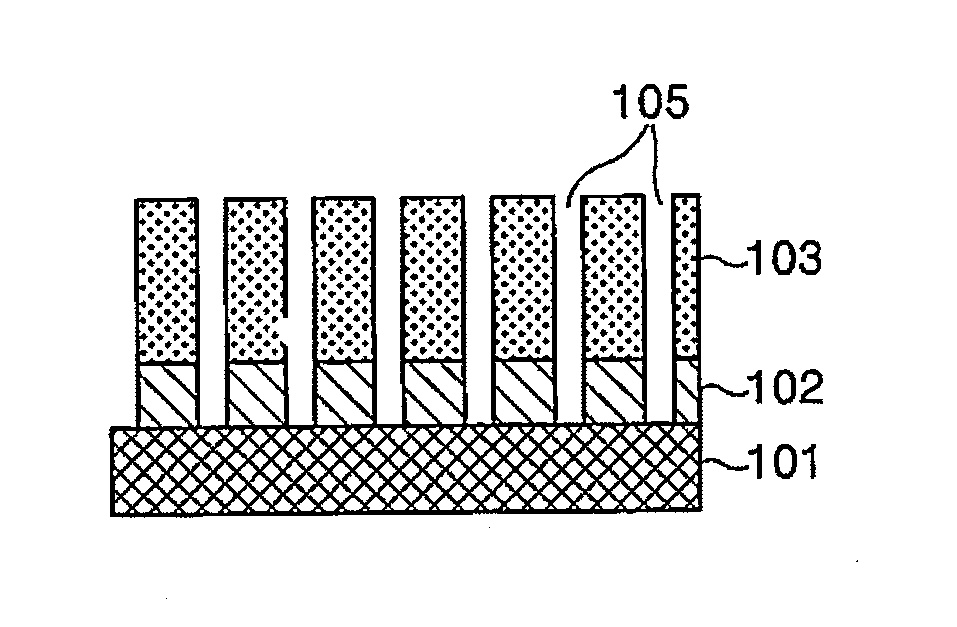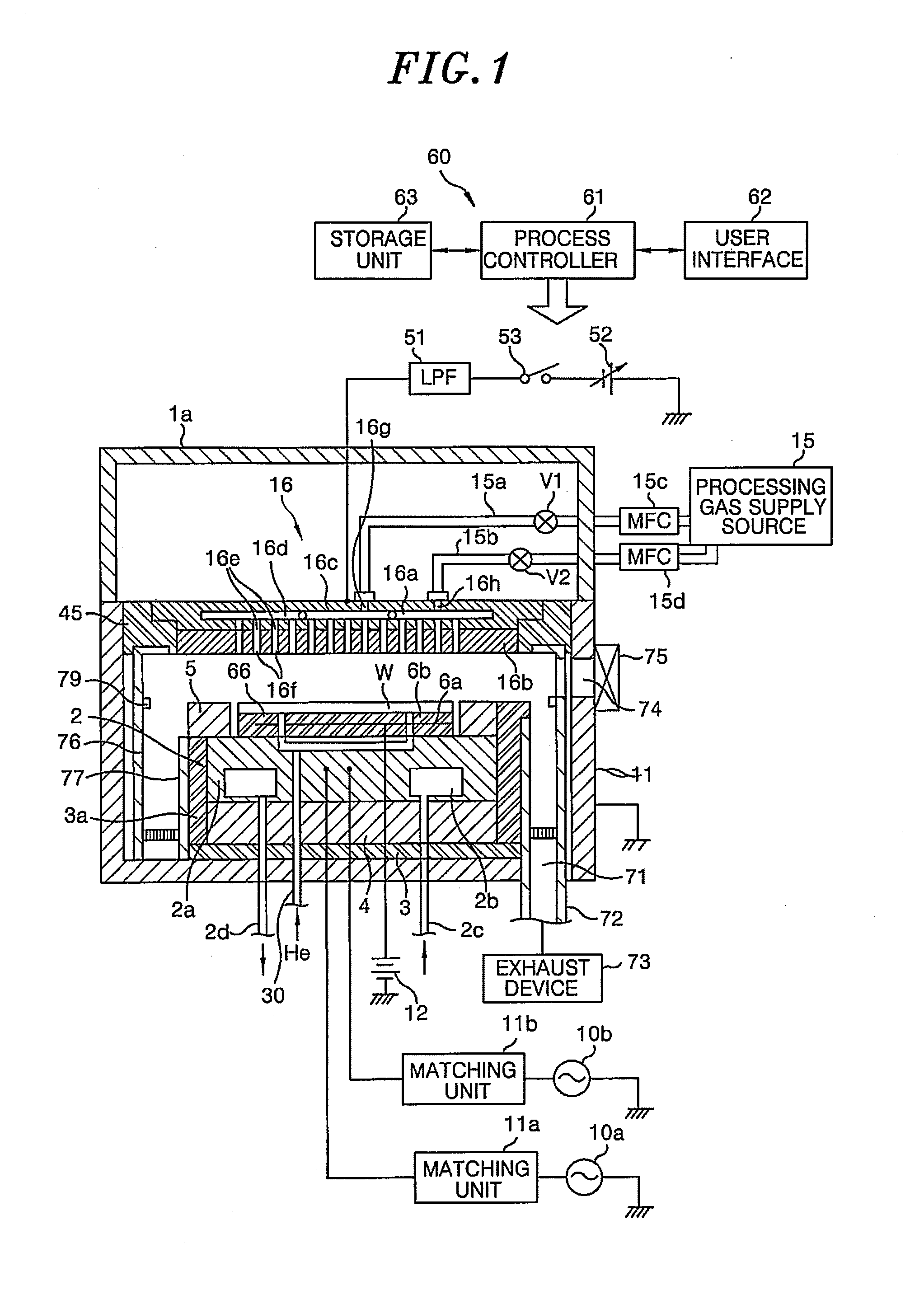Plasma etching method and plasma etching apparatus
a plasma etching and plasma technology, applied in the direction of electrical equipment, basic electric elements, electric discharge tubes, etc., can solve the problems of etching lines that may be wiped, lines formed by etching may be roughened, and the cross-sectional shape of lines may be deteriorated, so as to reduce the roughness of lines formed and improve the cross-sectional shape of lines
- Summary
- Abstract
- Description
- Claims
- Application Information
AI Technical Summary
Benefits of technology
Problems solved by technology
Method used
Image
Examples
example 1
[0082]In Example 1, after an amorphous carbon film etching step and a first silicon oxide film etching step were sequentially performed on a target object, an amorphous carbon film modifying step of modifying an amorphous carbon film was performed, and then, a second silicon oxide film etching step was performed. The amorphous carbon film etching step, the first silicon oxide film etching step and the second silicon oxide film etching step were carried out under the same conditions as in Comparative Example 1. The amorphous carbon film modifying step was performed under the following conditions.
[0083](Amorphous Carbon Film Modifying Step)
[0084]Processing gas flow ratio: COS / CF4 / Ar=20:30:800
[0085]Pressure: 6.7 Pa (50 mTorr)
[0086]High frequency power from the first high frequency power supply: 300 W
[0087]High frequency power from the second high frequency power supply: 0 W
[0088]DC voltage to the upper electrode: −900 V
Example 2
[0089]In the amorphous carbon film modifying step, a proce...
example 2
H2 / Ar=100:800
[0090]FIGS. 5 and 6 are diagrams showing the processing results in Comparative Example 1, Example 1 and Example 2. In FIG. 5, “Post ME1” indicates the target object after performing the first silicon oxide film etching step in Comparative Example 1 and Example 1. Further, “COS / CF4 / Ar Hardening” indicates the target object after performing the second silicon oxide film etching step in Example 1, and “H2 / Ar Hardening” indicates the target object after performing the second silicon oxide film etching step in Example 2. Furthermore, “w / o Hardening” refers to the target object after performing the second silicon oxide film etching step in Comparative Example 1. In FIG. 5, “cross-section” and “upper surface” are trace diagrams of photographs obtained by expanding the cross-section and the upper surface of the target object, respectively.
[0091]Further, FIGS. 5 and 6 show line width roughness (LWR), space width roughness (SWR), line edge roughness (LER) and “Sum” that is the su...
PUM
| Property | Measurement | Unit |
|---|---|---|
| frequency | aaaaa | aaaaa |
| frequency | aaaaa | aaaaa |
| DC voltage | aaaaa | aaaaa |
Abstract
Description
Claims
Application Information
 Login to View More
Login to View More - R&D
- Intellectual Property
- Life Sciences
- Materials
- Tech Scout
- Unparalleled Data Quality
- Higher Quality Content
- 60% Fewer Hallucinations
Browse by: Latest US Patents, China's latest patents, Technical Efficacy Thesaurus, Application Domain, Technology Topic, Popular Technical Reports.
© 2025 PatSnap. All rights reserved.Legal|Privacy policy|Modern Slavery Act Transparency Statement|Sitemap|About US| Contact US: help@patsnap.com



